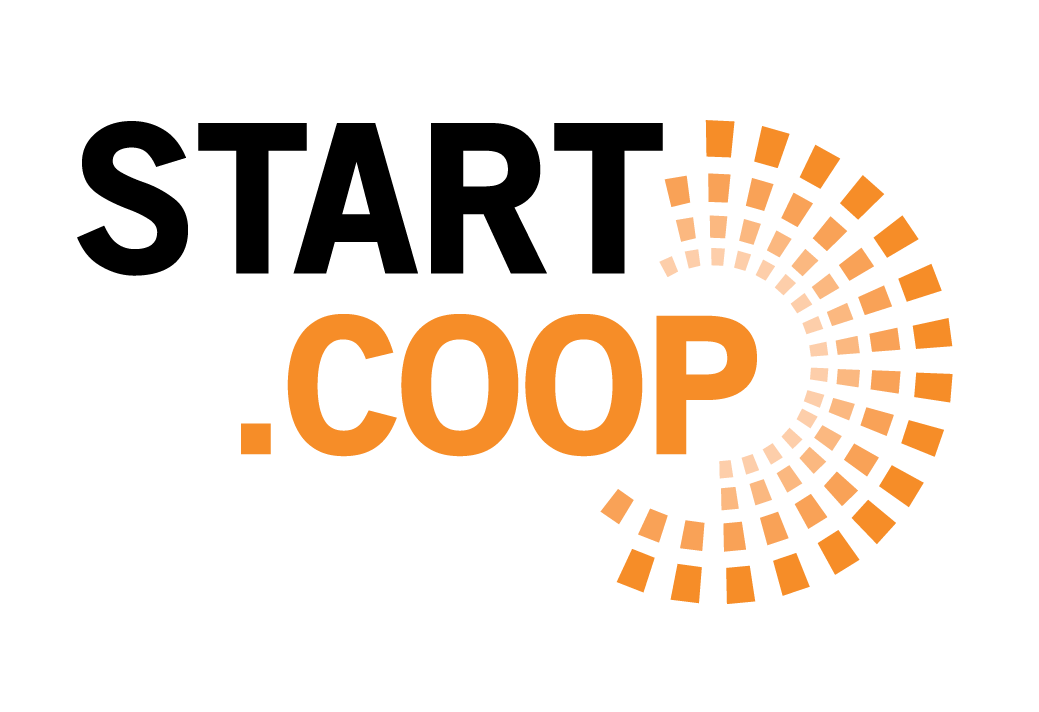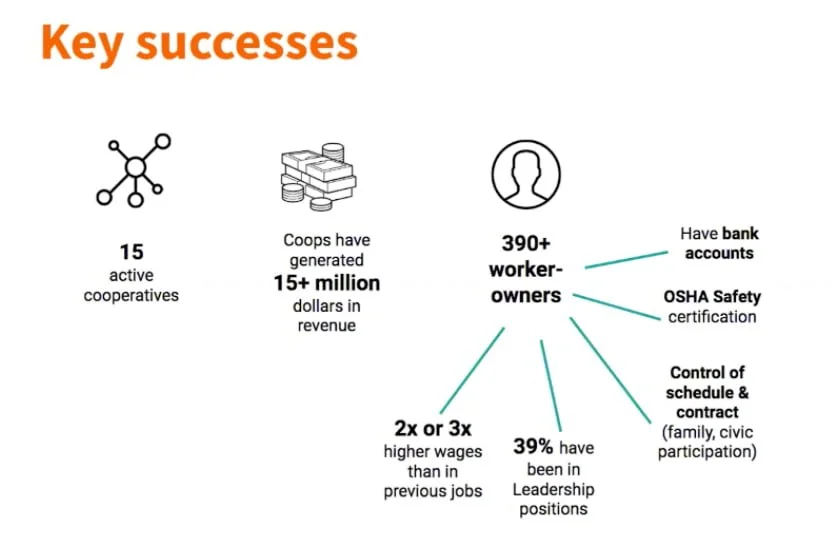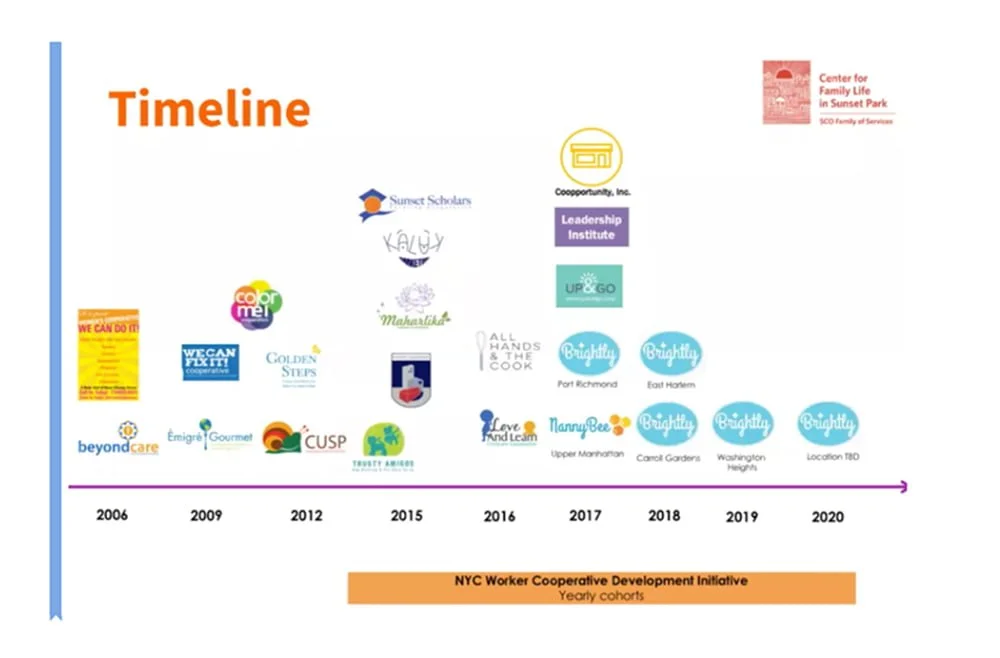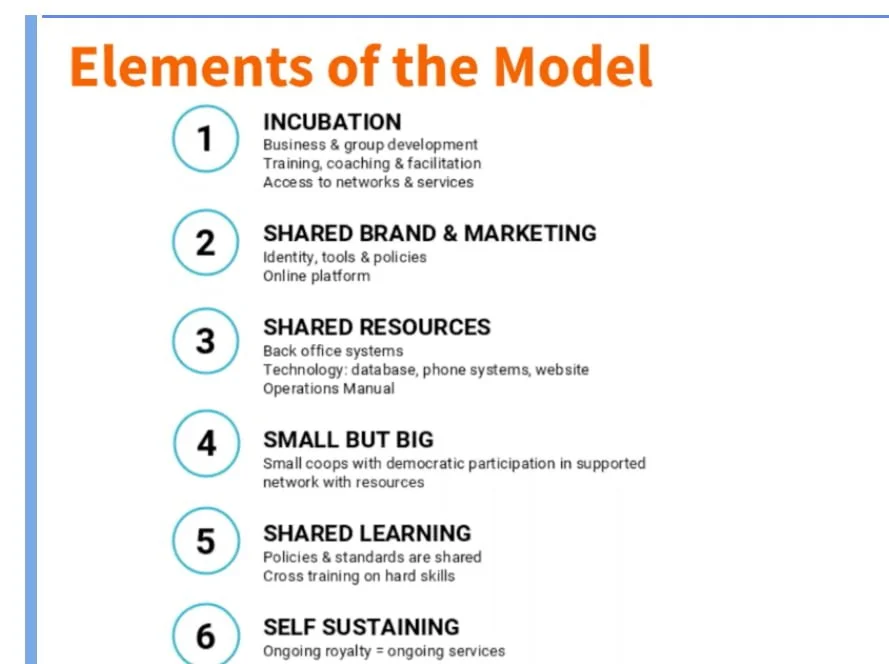BrightlyⓇ: Franchising Worker Co-op Development
This case study was written in 2020 by Greg Brodsky and Shahzaib Azhar based on interviews with Brightly employees and publicly available documents for the benefit of Start.coop accelerator participants and the broader co-op community.
Location: NYC
Background
The Center for Family Life is a community-based and social services organization that has been incubating worker cooperatives for over a decade. It is guided by a vision of neighborhood families and social institutions evolving over time and contributing to each other’s ongoing development. CFL offers an array of services, including family counseling, foster care, after school programming and summer programs to over 15,000 people each year.
One of the CFL’s programs, the Co-op Business Development program, aims to organize community members into worker-owned cooperative businesses with the mission of economic and social justice for immigrant and low-income workers. (Exhibit-1 for the overview of impact created since 2006)
Since 2006, the Co-op Development Program has incubated and supported more than 15 cooperative businesses, including Sí Se Puede!/We Can Do It! cleaning, Sunset Scholars tutoring, and NannyBee childcare. (See Exhibit-2)
Center For Family Life Serves
CFL serves a population that is primarily low income people of color, including many non-native English speakers, and many individuals who may not have completed secondary education.
Working with people of limited English or little education to start a business can be especially challenging, and so CFL has had to bring additional support and services to help people overcome these challenges. In the words of CFL Cooperative Development Director Maru Bautista, “We will not turn people away because they lack a skill set that others may consider necessary for business development, we have to innovate the solution and make the business start-up easy enough to reduce barriers and truly meet people where they are at.”
Problem
While successful at creating co-ops one at a time over a decade, the Co-op Development team recognized the tremendous time and expense to organize, build and launch each new co-op they had created, including creating by-laws and generating consumer awareness for each new company. And they began thinking about how to speed up co-op development, while still providing a high level of support to their community.
From a marketing perspective, the CFL team also saw that, like all small businesses, cooperatively owned businesses struggle to grow market share, especially in increasingly competitive sectors like childcare and cleaning.
The team realized that if they were to meet their vision of creating more cooperatives and also creating a larger societal impact, they needed to develop a strategy to get many more workers into cooperative ownership. As a result, they began researching how best to replicate and scale their model to build a larger network of cooperatives.
Vision
After researching strategies used by the Arizmendi Association of Cooperatives, the Mondragon Federation, and others to speed up worker co-op development. The CFL team felt they wanted to pilot a model which would allow them to replicate the by-laws, branding, and operations of existing co-ops into new communities. Their goals included:
Replicate more quickly existing successful co-ops.
Increase marketing reach and brand awareness for each new co-op.
Reduce start-up time/ shorten the “start-up learning curve”.
Improve operational tools, services, and support for each new co-op by using common back end services such as scheduling and billing. Each co-op would operate independently, but receive benefits (such as sharing costs of operation) by joining a larger “family.”
Create a culture and structure where individual co-ops could share best practices in a learning community over time.
The CFL team was aware that “franchising” was one of several possible strategies their model might adopt. However, recognizing that franchise law could be complicated and costly, they didn’t necessarily want to become a franchisor. Ultimately they realized that unless they sacrificed key components of their vision, the business model they wanted to build would indeed be subject to franchise laws.
What Exactly Makes a Franchise a Franchise?
The exact language used to define a “franchise” varies from state-to-state, but the most-common definitions of a franchise typically include three things:
Use of a trademark or other commercial symbol owned by the franchisor.
Some type of training, assistance, or other control that causes multiple locations owned by different people (the franchisees) to look like they are all owned by the same company.
In exchange for being given the rights to use the brand and operational support, the local franchisee agrees to commit a percentage of gross sales back to the franchisor. Typically this fee, called a royalty fee, will range from 4% on the very low end, up to about 12% on the very high end.
First Attempt
After considering which of the existing co-ops might easily replicate into a franchise model, CFL thought a Nanny co-op might be the best fit, and began work to replicate a worker owned nanny franchise on Staten Island. However, CFL learned quickly that applying “top down” franchise legal structures and terms to democratic ownership was going to create some unique challenges. The launch of the new nanny co-op franchise didn’t work because, as CFL was developing the franchise system while incubating the first potential franchisee cooperative, they were unable to provide enough answers or set clear enough expectations to prospective worker-owners in advance as to how exactly the franchise model would work, and who would have final control of operations and branding. Specifically the Staten Island group wanted to choose their own unique brand name, and did not want to share a brand with other locations, which from a CFL point of view would have defeated the goals of replication and developing a larger consumer brand.
Second Attempt
Learning from the first attempt, and with a more developed franchise concept, CFL staffers realized they needed to set much clearer expectations, much earlier with workers, so the team decided to to start a brand new business from scratch. During the planning process of the new co-op, the CFL team talked in depth with all prospective workers about how the new co-op would be developed as the first location of a larger co-op franchise model.
CFL established Coopportunity, as a separate non-profit, to be the actual franchisor, and each location would be a franchisee owned by the workers themselves.
However because franchise law is regulated, there is lots of compliance, which means the proposed franchise agreements worker-owners would have to sign to secure a franchise quickly became very long and more difficult to understand.
CFL staff spent hundreds of hours working through Brightly franchise agreements to mold conventional franchise documents, not just to serve the franchisor, but to better serve the interests of Brightly workers.
“We met weekly with the members of the cooperatives to go through the 202-page [legal] document, we talked about each section, and we pulled out the clauses that weren’t fair to them,” Phyllis Robinson explained. “[The workers] pushed us on it and, in the end, we all got to a really positive agreement.”
Brightly Launch
“Brightly is a licensed nonprofit franchise of worker-owned cooperatives that offer eco-friendly residential and commercial cleaning services.”
After 2 years of research and planning, in 2018, a Brightly® franchise was founded in New York City as the first legal worker cooperative franchise in the United States, with a vision to transform the cleaning industry for workers throughout the country.
Through a shared consumer brand, shared back end technology services and a very detailed operations manual, the Brightly® franchise model makes it easier for low-income entrepreneurs to launch new cleaning cooperatives, achieve economies of scale, and to grow their businesses.
A major challenge in the design was the balance of franchisor control/vs local franchisee autonomy. Franchise success is built on creating a well known consumer brand, and providing a very consistent customer experience. However democratic governed worker co-op’s are primarily built on local control. How to best align the two opposing forces was a subject of great internal discussion. Eventually it was agreed that rather than the franchisor dictating all brand standards, which would be the traditional approach, the franchisees themselves would form an industry committee to set, review, and update all national brand standards.
Who Decides What?
While consumer facing marketing and branding are set at the national franchisor level, the brand standard industry committee is made up of the franchisees.
The operations manual is established at the national level, in consultation with franchisees, and implemented at the local level.
Hours worked and schedules are set at the local level, but done using best practices and national tools.
What supplies to use, how often to meet, and how to make decisions together are decided at the local level.
How Does the Brightly Franchise Relationship Work?
The franchisor (Coopportunity) agrees to provide to each local franchise a license to use the established Brightly® brand and logo, marketing services, skills training, and a confidential Operations Manual containing the “secret sauce” for running a successful Brightly® Cooperative.
Every worker also becomes a part owner of their local Brightly franchise - becoming a worker-owner. And since by law, every owner of a franchise must sign a franchise agreement, all Brightly worker-owners have to sign the 202 page franchise agreement. (The franchise agreement stipulates, amongst other things, that the owners agree to follow the franchise operations manual and also to allocate a percentage of gross sales back to Coopportunity.) (Exhibit-3)
After a six month grace period, each new Brightly franchise begins contributing 5% of their revenue as a royalty fee back to Coopportunity. These royalty fees help offset the costs of marketing, technology, shared back-office services, and training.
Representatives of each Brightly® location serve on an Industry Committee to discuss common issues: cleaning and quality standards, products, and marketing strategies.
Each of the four existing Brightly® cooperatives has created its own governance processes and enjoys its own “organizational culture” and way of carrying out its work while existing within a larger consumer brand.
A five-person Board of Directors, composed of worker-owners and cooperative allies ensures the financial and legal viability of the Brand and adherence to its overall vision and mission.
Perks of Becoming a Brightly Franchise
Some of the benefits of becoming a Brightly® Franchise are:
Use of established Brightly® brand and logo, marketing services, skills training, and a confidential Operations Manual containing the “secret sauce” for running a successful Brightly®cooperative.
Access to the Up & Go marketing platform which makes it easier for customers to find and scheduling cleanings more easily through a tech-savvy web app. (Up & Go Cooperative is a web-based platform owned by the cleaning companies.)
Staff support from CFL’s cooperative development team that collectively has over a decade of experience incubating and supporting immigrant-led domestic worker cooperatives.
Shared back-office services to take calls, manage customer service inquiries, and handle any other schedule or billing issues.
No need to pay franchise entry fee for worker-owners, which would typically be a significant barrier for most domestic workers.
Increase worker-owners average hourly earnings from $11.50 per hour to $25.
Growth & Conclusions
Since CFL and Coopportunity are both nonprofits, the mission of the Brightly® franchise system is not to maximize profits, but instead to empower workers, foster ownership and asset development, and build a valuable brand with, and for, its franchise members.
As of July 2020, CFL has four Brightly® cooperatives in operation. (Exhibit-4). And Coopportunity is looking to expand the Brightly® franchise to more communities beyond NYC in 2021.
While the time to launch each new co-op has not been substantially reduced, post-launch new Brightly locations are creating jobs 26% faster and growing sales 232% faster, reducing each franchise’s cost and time to reach consumers. Faster sales growth means there is an increased likelihood of success for each location, and more cleaning jobs generated per worker.
The CFL team has also observed that Brightly cooperatives are becoming more sophisticated faster, and worker-owners are spending less time learning the business, because they have access to a constantly updated operations manual representing the best thinking of all the locations.
Perhaps just as important, CFL staff feel the Brightly franchise model has enabled them to better meet the varying needs of their target population, by being able to support their population with deeper layers of tools and systems that come with a franchise mindset.
Key Takeaways
CFL innovated a very traditionally “corporate” business tool, the franchise model, to be uniquely adapted and updated to benefit workers.
CFL’s first attempt at franchising a co-op failed because they were not able to set clear enough expectations in advance with prospective worker-owners.
The CFL team used an inclusive design process to balance cooperative autonomous entities within a franchise system.
While being obliged to comply with franchise law creates some additional friction points, the application of a franchise legal structure to a democratic business model has allowed more immigrant and low-income workers to raise their hourly earnings and therefore achieve economic stability.
The constantly updating operating manual shortens franchisee learning curve, prevents unnecessary duplication of effort, and allows worker-owners to focus on providing a great customer experience.
Access to Up & Go marketing and booking makes it easier and faster for franchisees to find new clients.
In an industry that otherwise can be very exploitative of workers, owning their local franchise protects workers in a very real and direct way.
This balance of cooperative autonomy, together with the guidance, tools, and services provided by a non-profit franchise structure, ultimately offers a win-win approach to all involved.
The royalty fees allow Coopportunity and the CFL team to create a pool for future co-op expansion.
Additional Resources
Center for Family Life - A program of SCO Family of Services
Fifty By Fifty: Lessons from the First U.S. Worker Cooperative Franchise
Not Your Grandparents’ Franchise: A Network to Scale-Up Worker Ownership
Scaling Social Justice: A Latinx Immigrant Worker Co-op Franchise Model




